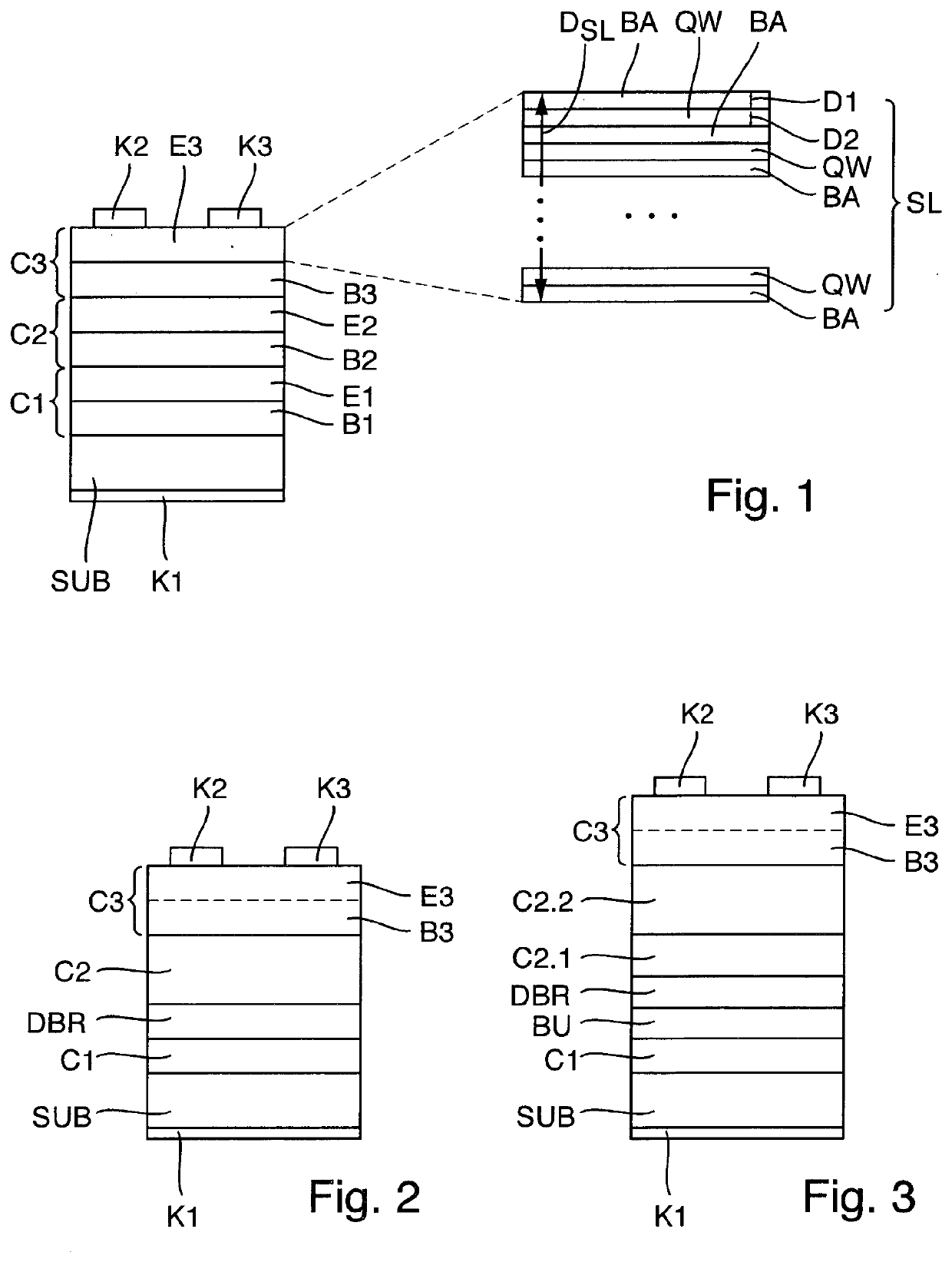Multi-junction solar cell
a solar cell and multi-junction technology, applied in the direction of basic electric elements, electrical apparatus, semiconductor devices, etc., can solve the problems of reducing the efficiency of the solar cell as a whole, higher series resistive losses in the multi-junction solar cell, and greater shadowing, so as to improve the transverse conduction effect, improve the efficiency of the solar cell, and improve the effect of transverse conduction
- Summary
- Abstract
- Description
- Claims
- Application Information
AI Technical Summary
Benefits of technology
Problems solved by technology
Method used
Image
Examples
Embodiment Construction
[0059]The illustration in FIG. 1 shows a view of an exemplary embodiment of a stacked multi-junction solar cell MJ, comprising a stack ST composed of a substrate layer SUB, a bottom subcell C1, a middle subcell C2, and a top subcell C3. A full-area contact layer K1 is formed on an underside of the stack ST. Contact fingers K2, K3 are arranged on a top surface of the stack.
[0060]Each subcell C1, C2, and C3 has one base B1, B2, B3 and one emitter E1, E2, E3 each, wherein emitter E3 and base B3 of the top subcell C3 are each made of a III-V semiconductor material.
[0061]The emitter E3 of the top subcell C3 includes a superlattice SL. The superlattice includes multiple thin well layers QW with the thickness D2 and multiple thin barrier layers BA with the thickness D1, wherein the well layers QW and the barrier layers BA are stacked on one another in alternation. The total thickness of the superlattice DSL results from the thickness of the alternating layers and the number of periods.
[006...
PUM
| Property | Measurement | Unit |
|---|---|---|
| thickness | aaaaa | aaaaa |
| thickness | aaaaa | aaaaa |
| thickness | aaaaa | aaaaa |
Abstract
Description
Claims
Application Information
 Login to View More
Login to View More - R&D
- Intellectual Property
- Life Sciences
- Materials
- Tech Scout
- Unparalleled Data Quality
- Higher Quality Content
- 60% Fewer Hallucinations
Browse by: Latest US Patents, China's latest patents, Technical Efficacy Thesaurus, Application Domain, Technology Topic, Popular Technical Reports.
© 2025 PatSnap. All rights reserved.Legal|Privacy policy|Modern Slavery Act Transparency Statement|Sitemap|About US| Contact US: help@patsnap.com

